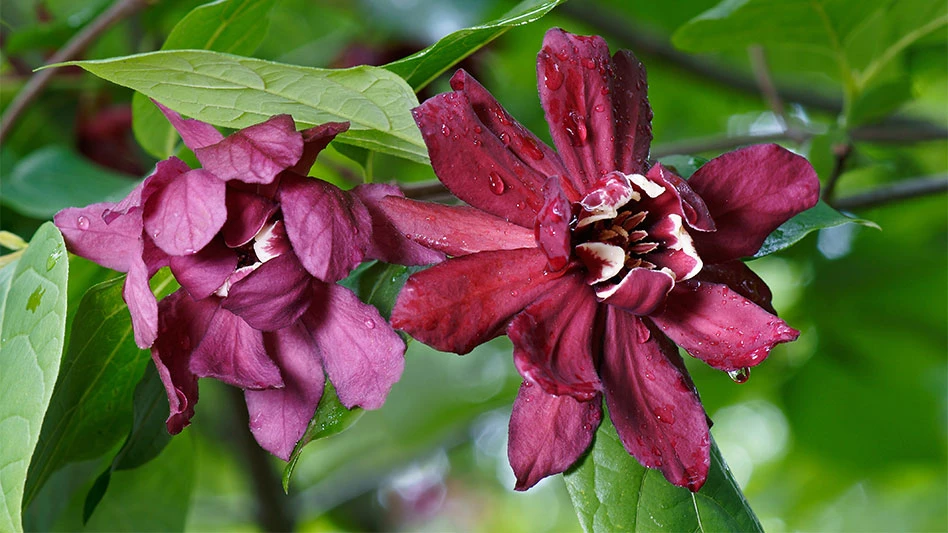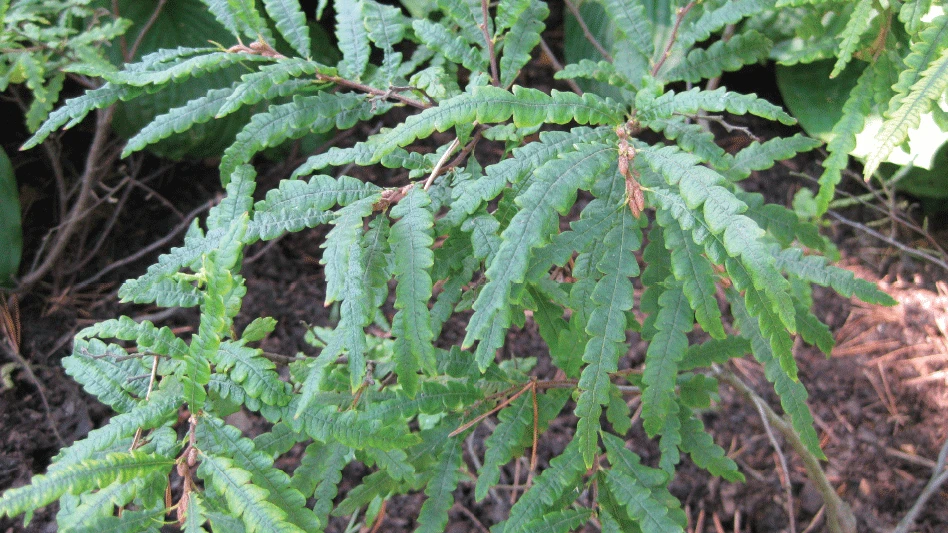
During my 38 years in Georgia, the Illicium species has catapulted from obscurity to refreshing prominence in the nursery industry. With around 40 species worldwide, only two (Illicium floridanum, Florida anise, and I.

I.
But this brief essay profiles I.
The species is remarkably insect and disease resistant, supporting the premise as a “no-brainer” landscape plant. Bruised foliage is highly aromatic and reminds me of sassafras or magnolia.
Andrea Southworth, a former graduate student, partially unraveled the basis for its insect resistance. She isolated and identified several compounds from the leaves (
The species occurs in five counties in central Florida in moist to wet soils along streams, ravines, swamps

The species may reach 30 feet in the wild, but consistently smaller under cultivation – 8-10 feet high (sometimes 15 feet), with
The olive-green foliage color persists through the seasons. Flowers open in May-June, sporadically thereafter, each ½-inch wide, with 6 to 12 yellow-green petals held on a crooked pedicel in the leaf axil. Fruit is star-shaped,
Several selections are in commerce, with the yellow-leaf ‘Florida Sunshine’ named by Tony Avent from Plant Delights Nursery being the most popular. Beautiful yellow to yellow-green foliage year-round when sited in shade. Foliage will
BananAppeal (‘PIIIP-I’) is a 2016 introduction from Bailey Nursery. Two yellow leaf seedlings were planted next to ‘Florida Sunshine’ at Plant Introductions, Inc. (PII). My partners and I debated whether there was any justifiable uniqueness to warrant the introduction of either seedling. Leaf orientation, stem coloration, smaller habit, and ease of container culture (not as wobbly) were sufficient to move Bailey to introduce it. I estimate 2 ½ feet to 4 feet high and wide at maturity. Leaves are borne horizontally in contrast to the 45-degree angle of ‘Florida Sunshine.’ The stems of young shoots are orange-red and contrast with the brilliant yellow leaves.
Superior Trees gave me a green-white streaked and spotted leaf seedling many years ago. I tried to stabilize the variegation with no
I discovered a darker green leaf seedling in the University of Georgia botanical garden and named it ‘Forest Green.’ Most thought it was not sufficiently unique and it has quietly passed into the cultivar sunset. Mark Griffith at Griffith Propagation Nursery discovered a yellow-margined, irregular green-centered sport on BananAppeal, which is currently under evaluation.


Explore the May 2018 Issue
Check out more from this issue and find your next story to read.
Latest from Nursery Management
- How impending tariffs and USDA layoffs impact the horticulture industry
- Shifting the urban environment
- These companies are utilizing plastic alternatives to reduce horticultural waste
- How to create a sustainable plant nursery
- Lamiastrum galeobdolon ‘Herman’s Pride’
- One of rarest plants on earth: Tahina spectabilis
- Leading Women of Horticulture: Angela Labrum, Bailey Nurseries
- Get to know Pat Reilly with NewGen Boxwood and the American Boxwood Society





